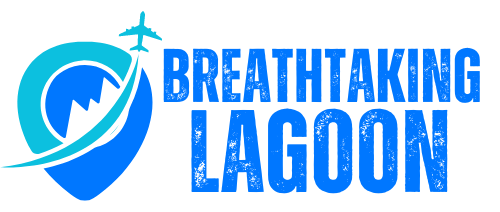Cruising Altitude is a weekly column about air travel. Have a suggestion for a future topic? Fill out the form or email me at the address at the bottom of this page.
I’m on my way home from Australia, and on this trip I flew Qantas to Los Angeles from Sydney, and on to New York on American Airlines. This kind of multi-airline itinerary is super common for travelers thanks to codeshare agreements between airlines and other kinds of business partnerships.
American Airlines and Qantas, for example, don’t just codeshare (meaning, sell tickets on each other’s flights) but also have a joint business venture, which lets them cooperate more closely on schedule and pricing.
The value of this partnership for both airlines is obvious. Sydney was plastered with ads advertising the connectivity boost it provides passengers, and an American/Qantas itinerary is arguably the most direct way for most Americans to get to Australia.
“American is proud to partner with Qantas to increase travel options for customers to Brisbane, Sydney, and Melbourne this winter,” Steve Johnson, American’s Vice Chair and Chief Strategy Officer, said in a statement announcing new cooperative routes between the airlines in May. “Together, we offer the most comprehensive service connecting the United States with Australia, New Zealand and the South Pacific.”
American and Qantas are also both members of The oneworld Alliance, meaning they also share many other partners across the airline industry.
For travelers, codeshared itineraries on partner airlines can offer flexibility, more direct routing and better schedule opportunities than they’d be able to get on a single carrier, but there are still some important things to keep in mind if you’re flying on multiple airlines on the same trip, even if you bought the flights on a single ticket.
A codeshare agreement between airlines lets companies sell tickets on each other’s flights.
“In a codeshare, a flight operated by one airline carries the flight numbers of one or more other airlines on it,” Henry Harteveldt an airline industry analyst and president of Atmosphere Research Group, an independent travel analytics firm, told me. “What the codeshare does is allow airlines to have a proxy presence in markets where they don’t operate.”
For example, on this Australia trip even my American Airlines flight from Los Angeles to New York had both an AA and Qantas flight number, along with flight numbers of some other airline partners. Those flight numbers represented a way for each company to get its passengers to markets within the United States that they don’t necessarily serve directly.
My tickets were booked separately, but both American and Qantas were selling the same flights from Sydney to New York via LA as a package on their websites.
This is possibly the most confusing part of codeshares for infrequent travelers – just because your flight has a flight number from one airline, that doesn’t mean you’re getting the same service as you would on that airline if the flight itself is operated by another carrier.
“The airlines are more concerned about the map than the meal, let’s put it that way. If the partner airline provides access to a country or a part of the world that the other partner doesn’t serve very well or at all, that’s more important,” Harteveldt said.
That means that a full-service airline like American could codeshare with an ultra-low-cost carrier in another part of the world for access to a new market, and travelers who book through AA may not be aware that one of their flights could have a much more basic product.
Although airlines are required to disclose which carrier is operating every flight, travelers who don’t know to look for the disclosure could miss it when they book.
“The seating configuration might be different; the type of airplane the airline operates may be different,” Harteveldt said. “There are all sorts of differences, some may be good, some may be bad, the codeshare partner may have more flight attendants working in the cabin than the host airline you’re used to flying, the catering may be better.”
It depends. Some airline partners will have reciprocal status benefits, but it’s not guaranteed, and the benefits on your main airline may not be the same on other airlines at your status level. It’s a good idea to delve into your airlines’ partner webpages to learn more about exactly what to expect.
Probably not. Every airline has its own seat products and seat-selection rules. Even if you book your ticket through one airline, if another carrier actually operates the flight, you’ll get whatever seats that airline offers.
When switching between American and Qantas, I definitely noticed some differences in their business-class seats and service, and found some seats to be more comfortable and well-appointed than others. One of the biggest differences, also, was that the Qantas flight had no Wi-Fi onboard, while the American Airlines flights did (for purchase).
“There are cases where the codeshare partners offer a tangibly different passenger experience,” Harteveldt said. “In some cases, it may be inferior; in some cases, it may be better.”
For the most part, codeshared itineraries are meant to make travel easier for passengers by providing better schedules and more flight options, but that doesn’t mean there are no potential drawbacks.
When things operate smoothly, travelers may not even pay attention to the fact that their flights are operated by different airlines, but when things go awry, it can get more frustrating.
“If you encounter a problem along the way, it’s not uncommon to find yourself a human ping pong ball being bounced between the customer service or reservation departments waiting for a resolution,” Harteveldt said.
I’ve been fortunate to never encounter an issue myself – although now that I’ve put it into writing, I’m sure it’s only a matter of time – but I’ve certainly heard stories of fellow travelers getting stuck between carriers pointing fingers at each other when they’ve run into a problem: “It’s the operating carriers responsibility.” “No, it’s the ticket seller’s responsibility.”
It can be difficult to get a straight answer, but usually it’s best to start by talking to the airline you booked the ticket through, and then be prepared to get transferred to the operating airline. It may take some back and forth, but the issue should usually be resolved between the two carriers’ customer service desks.
For frequent flyer status holders or travelers on some international itineraries, codeshares can offer an extra level of complexity, too, because rules about seat assignments and other ticket perks may not be consistent across the itinerary.
Codeshares are ultimately good for travelers because of the flexibility and connectivity they can offer when things run smoothly, but it’s important to know exactly which airline is operating your flights and what to expect so you’re not caught by surprise at the boarding door, or when you suddenly find you can’t check your email at 35,000 feet.
The reporter on this story received access from American Airlines and Qantas. USA TODAY maintains editorial control of content.
Zach Wichter is a travel reporter and writes the Cruising Altitude column for USA TODAY. He is based in New York and you can reach him at zwichter@usatoday.com.




